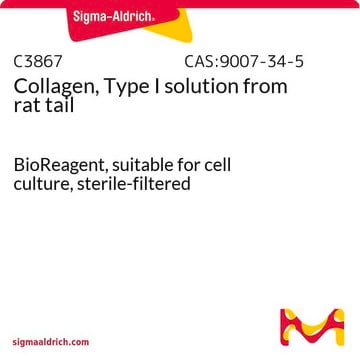Products may be shipped at a different temperature than the recommended long-term storage temperature. If the product quality is sensitive to short-term exposure to conditions other than the recommended long-term storage, it will be shipped on wet or dry-ice. If the product quality is NOT affected by short-term exposure to conditions other than the recommended long-term storage, it will be shipped at ambient temperature. As shipping routes are configured for minimum transit times, shipping at ambient temperature helps control shipping costs for our customers. For more information, please refer to the Storage and Transport Conditions document: https://www.sigmaaldrich.com/deepweb/assets/sigmaaldrich/marketing/global/documents/316/622/storage-transport-conditions-mk.pdf
360589
Tetrahydrofuran
≥99.0%, ACS reagent, contains 250 ppm BHT as inhibitor, suitable for HPLC
Synonym(s):
THF, Butylene oxide, Oxolane, Tetramethylene oxide
About This Item
143 mmHg ( 20 °C)
Recommended Products
Product Name
Tetrahydrofuran, contains 250 ppm BHT as inhibitor, ACS reagent, ≥99.0%
grade
ACS reagent
Quality Level
vapor density
2.5 (vs air)
vapor pressure
114 mmHg ( 15 °C)
143 mmHg ( 20 °C)
Assay
≥99.0%
form
liquid
autoignition temp.
610 °F
contains
250 ppm BHT as inhibitor
expl. lim.
1.8-11.8 %
technique(s)
HPLC: suitable
impurities
≤0.015% peroxide (as H2O2)
≤0.05% water
evapn. residue
≤0.03%
color
APHA: ≤20
refractive index
n20/D 1.407 (lit.)
pH
~7
bp
65-67 °C (lit.)
mp
−108 °C (lit.)
solubility
water: soluble
density
0.889 g/mL at 25 °C (lit.)
SMILES string
C1CCOC1
InChI
1S/C4H8O/c1-2-4-5-3-1/h1-4H2
InChI key
WYURNTSHIVDZCO-UHFFFAOYSA-N
Looking for similar products? Visit Product Comparison Guide
General description
Application
- Organic synthesis
b) Organometallic compounds
c) Reformatsky
d) Lithiation
e) Hydride reduction
f) Metal-catalyzed coupling (Heck, Stile, Suzuki)
g) Lewis acid mediated reactions
- Crystallization
- Polymerization. Ex. RAFT (Reversible Addition-Fragmentation Chain Transfer) polymerization of p-acetoxystyrene
- Coatings
- As an O-donor ligand to form coordination complexes
- As mobile phase solvent in high-performance liquid chromatography
Features and Benefits
related product
Signal Word
Danger
Hazard Statements
Precautionary Statements
Hazard Classifications
Acute Tox. 4 Oral - Carc. 2 - Eye Irrit. 2 - Flam. Liq. 2 - STOT SE 3
Target Organs
Central nervous system, Respiratory system
Supplementary Hazards
Storage Class Code
3 - Flammable liquids
WGK
WGK 1
Flash Point(F)
-6.2 °F - closed cup
Flash Point(C)
-21.2 °C - closed cup
Choose from one of the most recent versions:
Already Own This Product?
Find documentation for the products that you have recently purchased in the Document Library.
Customers Also Viewed
-
How is shipping temperature determined? And how is it related to the product storage temperature?
1 answer-
Helpful?
-
-
How can I determine the shelf life / expiration / retest date of this product?
1 answer-
If this product has an expiration or retest date, it will be shown on the Certificate of Analysis (COA, CofA). If there is no retest or expiration date listed on the product's COA, we do not have suitable stability data to determine a shelf life. For these products, the only date on the COA will be the release date; a retest, expiration, or use-by-date will not be displayed.
For all products, we recommend handling per defined conditions as printed in our product literature and website product descriptions. We recommend that products should be routinely inspected by customers to ensure they perform as expected.
For products without retest or expiration dates, our standard warranty of 1 year from the date of shipment is applicable.
For more information, please refer to the Product Dating Information document: https://www.sigmaaldrich.com/deepweb/assets/sigmaaldrich/marketing/global/documents/449/386/product-dating-information-mk.pdfHelpful?
-
-
What is the Department of Transportation shipping information for this product?
1 answer-
Transportation information can be found in Section 14 of the product's (M)SDS.To access the shipping information for this material, use the link on the product detail page for the product.
Helpful?
-
-
Can you recommend a Solvent Extractor for organics from aqueous solution?
1 answer-
Solvent extractors are often used for the quantitative extraction of organics from aqueous solutions and separations in immunoassays. The MIXXOR system has been applied successfully in many laboratory solvent extraction operations and is ideal for the rapid screening of alternative solvents for specific extraction problems.
Helpful?
-
-
Who do I contact about larger solvent volume needs?
1 answer-
Email us at [email protected] or visit Sigma-Aldrich Fine Chemicals for development and manufacturing-scale inquiries: [email protected]
Helpful?
-
-
What apparatus do you recommend for HPLC solvent filtration?
1 answer-
The Sigma-Aldrich Vacuum Filtration Assembly gives you all the components you need including: funnel top, fritted glass funnel support, filtration flask, aluminum clamp, and silicone stopper. The Acrodisc Syringe Filters offer high quality filtration for analytical samples, certified for HPLC to ensure low extractable and available in a broad range of membranes to meet sample compatibility requirements.
Helpful?
-
-
What are some of the preservatives used in the most common ethers and chlorinated solvents and why are they added?
1 answer-
Certain solvents will degrade over time requiring special handling and storage considerations. In addition, the products of certain degradation processes pose a potential safety risk if present at sufficiently high levels. For these types of materials, small amounts of stabilizing chemicals are added to slow down or stop material degradation.
Helpful?
-
-
What are the options for drying solvents?
1 answer-
Sigma-Aldrich offers a full range of high-purity solvents with extremely low water levels specifically manufactured for moisture sensitive Organic and Biotech applications. Sigma-Aldrich also carries various drying agents such as molecular sieves, which are typically compatible with organic solvents.
Helpful?
-
-
Why do peroxides form in certain solvents and how do I test for it?
1 answer-
A significant number of laboratory solvents can undergo autoxidation under normal storage conditions to form unstable and potentially dangerous peroxide by-products. Molecular structure is the primary factor relating to a material’s potential for hazardous peroxide formation. It is important to understand the stability of materials in use and if unclear, consult Sigma-Aldrich Technical Support, [email protected].
Helpful?
-
Active Filters
Our team of scientists has experience in all areas of research including Life Science, Material Science, Chemical Synthesis, Chromatography, Analytical and many others.
Contact Technical Service







